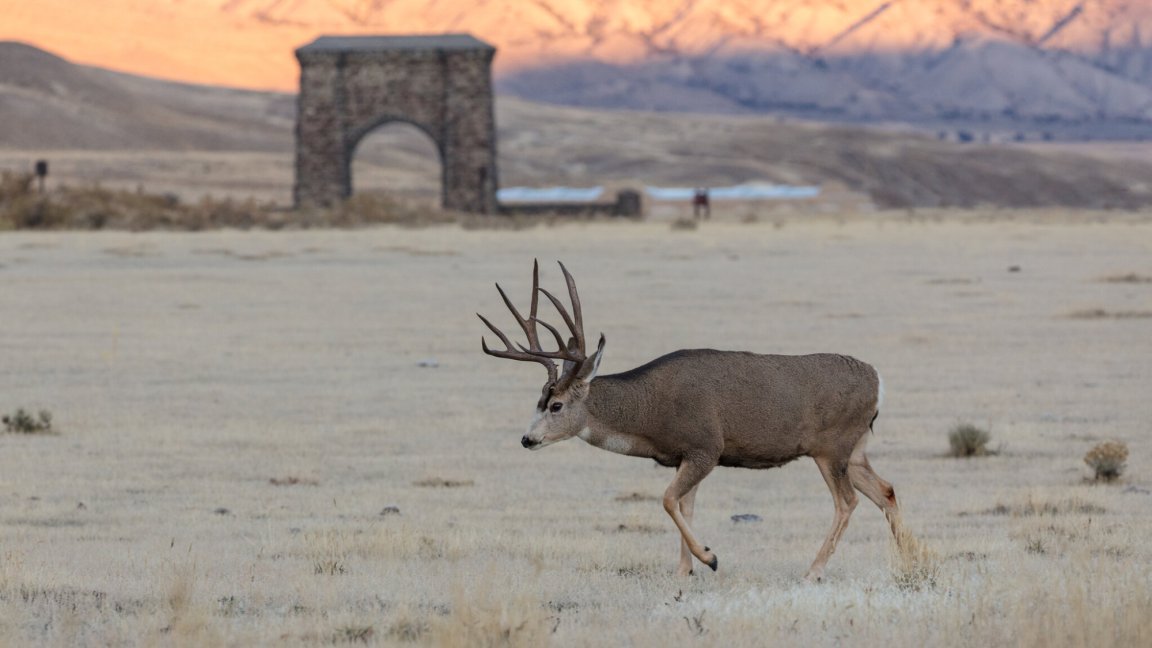An adult mule deer buck is Yellowstone National Park’s first chronic wasting disease victim, officials announced on Tuesday in a press release. The buck had been fitted with a GPS collar in March 2023 as part of a population dynamics study by the Wyoming Game and Fish Department, and its collar emitted a mortality signal in mid-October. Results from multiple diagnostic tests confirmed that CWD was the cause of death on Nov. 1, WGFD public information officer Breanna Ball tells Outdoor Life in an email statement.
After receiving the mortality signal on Oct. 20, WGFD coordinated with the National Park Service and found the buck on the Promontory, which the YNP website describes as “a landmass that separates the South and Southeast arms of Yellowstone Lake.” WGFD officials collected samples for testing at their Wildlife Health Laboratory.
In the coming days and weeks, YNP will coordinate with WGFD and other neighboring state agencies to figure out where in the park CWD might show up next. They will also increase surveillance efforts over deer, elk, and moose populations and bump up testing efforts in deceased animals.
It’s a transitory time for mule deer in YNP. While around 1,900 mule deer spend their summer within the boundary, mostly in the northern part of the park, just 400 remain through the winter while the rest migrate elsewhere. Mule deer visit Yellowstone Lake quite frequently, according to Bell.
“It is typical for deer to spend time near Yellowstone Lake,” Bell writes. “This area is typical summer core mule deer range.”
YNP is home to a very scarce and unmonitored population of whitetail deer, and fewer than 200 moose. But the elk population is tenfold what the mule deer population is. In the summer, 10,000 to 20,000 elk stroll into the boundary, and some 4,000 elk remain through the winter. CWD affects elk in the same way it affects deer, and is 100 percent fatal.
Read Next: Here’s What Top Chronic Wasting Disease Researchers Can’t Say on the Record
YNP officials are currently revising the park’s 2021 Chronic Wasting Disease Surveillance Plan and predict that the updated version will be ready in 2024, the press release noted.
Editor’s note: This article has been updated to include comment from the Wyoming Game and Fish Department.
